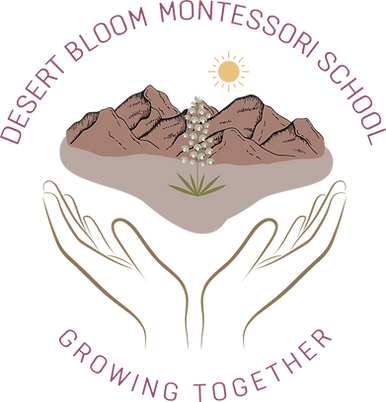
ABOUT OUR PROGRAM
AND CURRICULUM

Primary Program (Also Known as Children’s House)
The primary program we offer is for children ages 3 to 6 and is part of what Dr. Maria Montessori called the first plane of development, a period of time when children seek to develop physical and psychological independence.
This is a period of development for coordinated movement, language, a sense of order, concentration and refinement of their five senses.
The Montessori classroom and curriculum are carefully prepared to meet these specific needs and children learn primarily hands on through concrete materials and experiences. The learning materials are beautifully appealing and self-correcting to encourage initiative, independent thinking and creativity. Some of the key Montessori principles that are diligently followed by Montessori teachers, also commonly known as guides, are respecting the child’s pace, offering uninterrupted work periods, giving freedom of choice and movement within limits, and focusing on the overall education of the child that includes academic knowledge but also positive development of their social, emotional, physical, and moral aspects.
The curriculum is made up of 5 areas: Practical Life Activities, Sensorial Exercises, Mathematics, Language Arts, and Cultural Activities.

Practical Life activities such as polishing, sewing, cutting and pasting, and washing help enhance students’ fine and gross motor skills and promote coordination, concentration, independence and good work habits. They also include lessons in grace and courtesy.
Sensorial exercises lead students to refine their five senses by working with materials such as the color tablets, the sound cylinders, and the thermic tablets. Through sensorial instruction, children learn to classify and categorize the world around them.
Mathematics In this area of the curriculum, students learn basic numerical concepts, the decimal system, geometry concepts and the operations of addition, subtraction, multiplication, and division by using tactile materials that allow them to visualize and better understand the abstraction of numbers.
Language The Montessori language curriculum includes dynamic and enriched activities such as active listening, public speaking, singing, reciting poetry, rhyming, reading and writing. Group activities such as circle time provide many opportunities for vocabulary lessons and to build confidence in self-expression. Working and practicing with materials such as the sandpaper letters and the large movable alphabet lays the groundwork for reading and writing efficiency.
Cultural Activities include lessons in zoology, history, physical and cultural geography, art, music, botany, and science. Children enjoy learning about the different animal kingdoms, biomes, cultures, and customs through captivating and enriching materials that they are drawn to and want to repeat time and time again, leading them to a deeper understanding and mastery of the content. This same type of natural and joyful learning process applies to all other areas of the curriculum.

